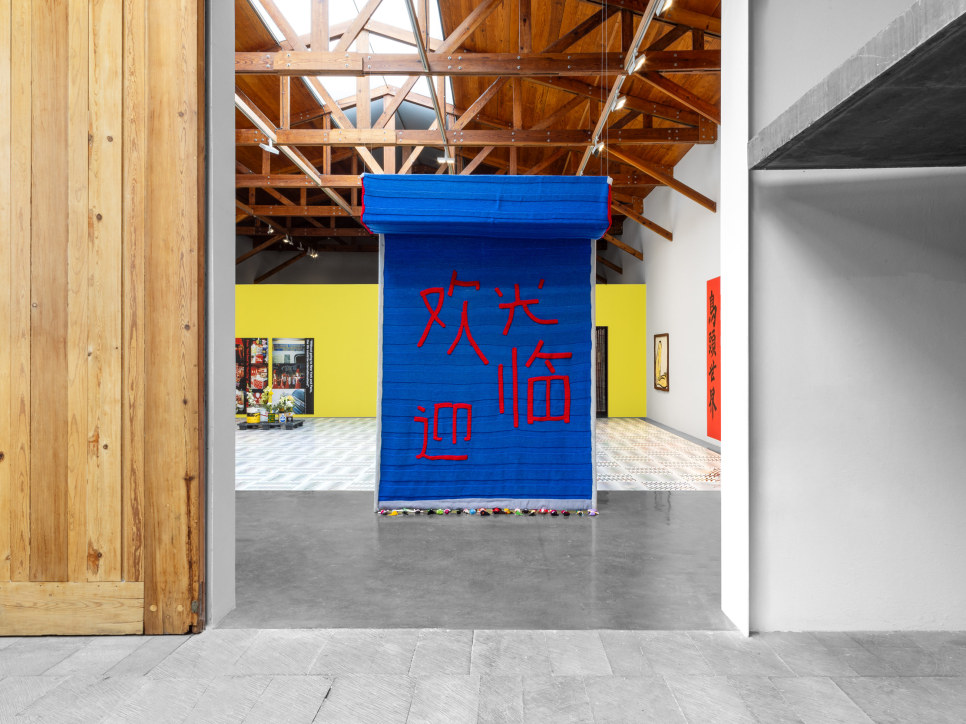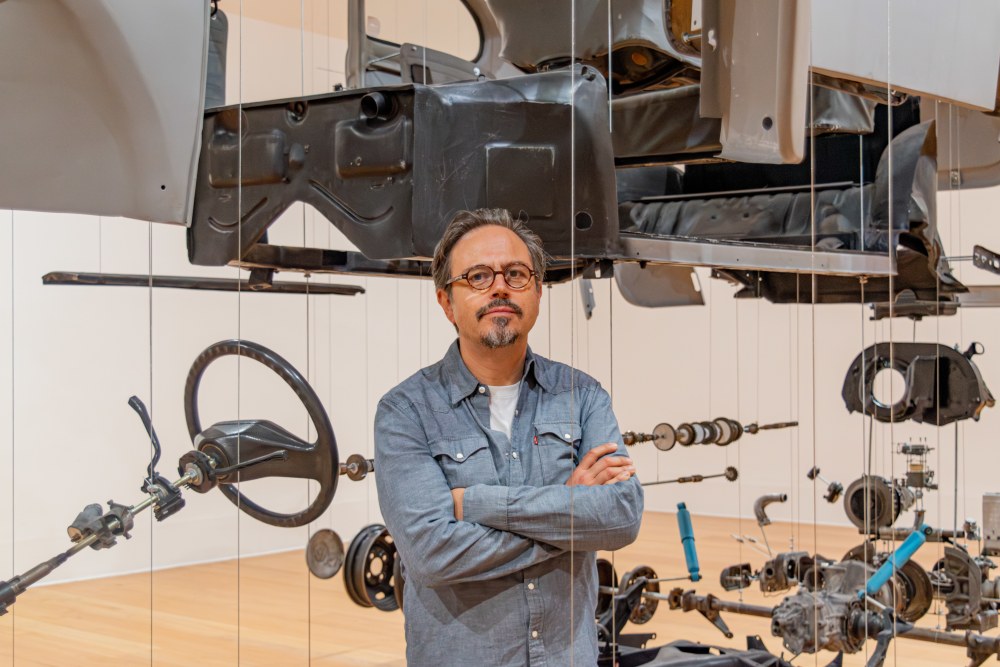

With his sense of wit and humor, Damián Ortega (Mexico, 1967) deconstructs familiar objects and processes, altering their functions and transforming them into novel experiences and scenarios. Ortega’s work plays with a scale that ranges from the molecular to the cosmic, as the art critic Guy Brett says, Ortega combines the cosmic with the accidental, applying the concepts of physics to human interactions where chaos, accidents and instability produce a system of relations in flux. Inverting and dissecting, reconfiguring and zooming in, he explores the tension that underlies every object and the infinite world inside them. The result of his inquiries reveals the interdependence of diverse components either within a complex engineered machine, or a social system. Envisioning his projects through drawing – that then take form as sculpture, installation, performance, film and photography – for Ortega, the work of art is always an action: an event. His experiments inhabit a space where possibility and the everyday converge, to activate a transcendent new way of looking at simple objects and routine interactions.
Damián Ortega began his career as a political cartoonist. He joined Gabriel Orozco’s workshop Taller de los viernes from 1987 to 1992. In 2005 he was nominated for the Hugo Boss Prize and in 2007 was nominated for the Preis der Nationalgalerie für junge Kunst. Similarly in 2014 he received the Smithsonian Artist Research Fellowship from the Smithsonian Institution and in 2006 he made an artistic residency at Deutscher Akademischer Austausch Dienst (DAAD) in Berlin.
About the work:
Building on Mexico’s historical custom of creating papier-mâché effigies (“Judas” figures) to mimic religious figures and political personalities, the works are composed from paper bags used to package and ship powdery cement mix. They take the shape of well known skyscrapers from around the world—the Marina Towers in Chicago, Habitat 67 in Montreal, and Taipei 101, to name a few—and are topped with animal heads. Ortega’s zoomorphic interventions breathe a sense of primal energy and animalistic spirit into structures best known as triumphs of rational design and engineering. The sculptures’ paper exteriors add texture and visual rhythm, with colorful company logos cut, pasted, and shaped into intricate patterns. The utilitarian bags also hint at the complex networks of commodity exchange that fuel large-scale construction as goods and resources traverse the globe in the name of rapid growth. Materially delicate and rich with animism, Ortega’s skyscrapers shine a light on the unfettered ambition at the heart of so much monumental architecture. As the artist puts it, “Paper buildings speak of the fragility of the great projects in life. The material opposes the infinite ambition of reaching new cosmic, celestial, megalomaniac heights.”